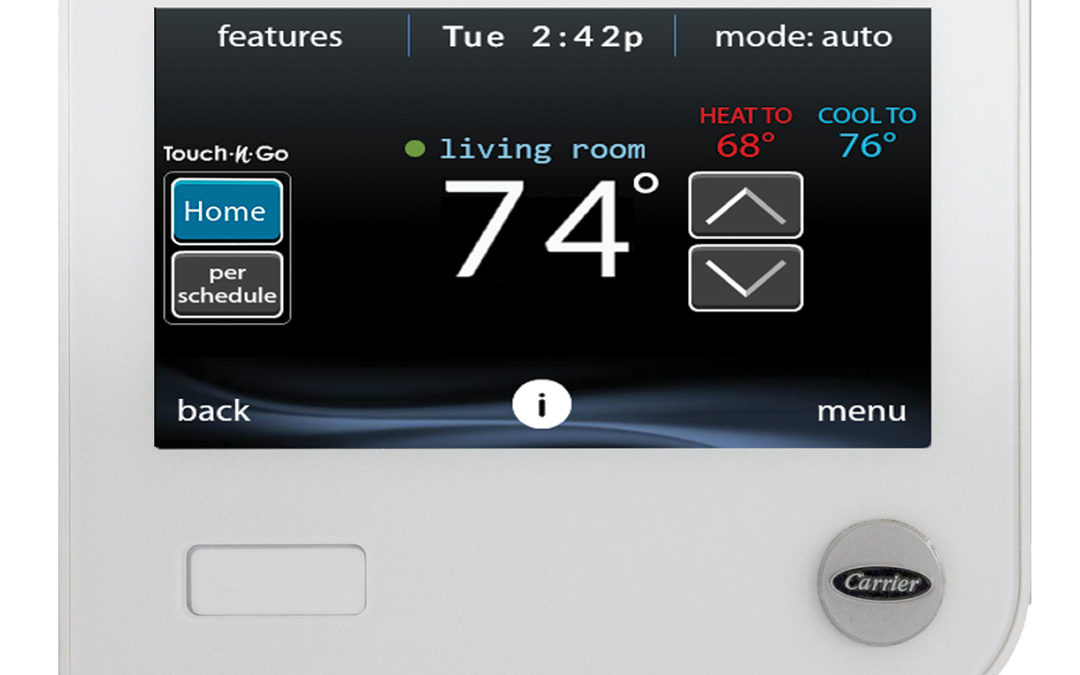Smart thermostat, Wi-Fi thermostat, programmable thermostat, communicating thermostat, learning thermostat, setback thermostat, four-wire thermostat, five-wire thermostat, power stealing thermostat, Energy Star Certified Smart thermostat…. The list goes on and on.
It’s no wonder that homeowners have a “deer in headlights” look when faced with the choices of purchasing a new thermostat. You need to be an engineer to understand all the differences! And that’s what I am (an engineer) and what I hope to do in this blog.
In this first post of many on thermostats, I will start with the basics and ask, “What is a thermostat and what does it do?”
What Is A Thermostat?
In its simplest form, a thermostat is a device that turns the HVAC unit ON and OFF to maintain the temperature at the thermostat close to the desired setting. It is typically mounted on an interior wall and, alone, cannot measure temperature throughout the house – only near the thermostat.
What Does A Thermostat Do?
As the thermostat is cycling the HVAC unit ON and OFF to maintain temperature, the temperature in the house will actually rise and fall (fluctuate) as the unit is cycling. The term HVAC techies use to describe this fluctuation is called “swing”. In most cases, homeowners do not notice the swing. If they do, then there is a possibility the furnace or air conditioner is too large for the home, or the thermostat is improperly adjusted (more common with old thermostats).
A small amount of swing is not noticeable. However, a large amount of swing can feel very uncomfortable as the air temperature fluctuates between warm and cool. Unfortunately, there is little one can do to reduce the temperature swing on an existing system (presuming the thermostat is in a proper location and is adjusted properly). A large amount of swing is typically associated with a furnace, or air conditioner, that is too large and the only solution is to install a smaller capacity unit.
Choosing the Right Thermostat for Your Home
If you are in the market for a new system and want a better level of comfort than what an ON/OFF system can provide, consider either a two-stage or modulating furnace/air conditioner. The more increments in capacity that a unit can deliver, the more precise the air temperature near the thermostat can be held.
Two-Stage HVAC Unit
A two-stage HVAC unit controlled by a two-stage thermostat and delivers a low and high capacity of heat or cool. When weather is mild, there is no need for high stage so the thermostat will operate the unit on low stage capacity. This, in turn, reduces the magnitude of the air temperature fluctuation as compared to a single stage unit operating at full capacity, leading to better overall comfort.
The magnitude of the reduced air temperature fluctuation is proportional to the ratio of low to high stage capacities. For example, a furnace with low stage capacity equal to 67% of full capacity (typical of most two-stage furnaces) will have 1/3 less temperature swing than a furnace operating at full capacity. If the temperature fluctuates 1.5 degrees when cycling ON/OFF at full capacity, it will only fluctuate about 1.0 degree when cycling on low stage.
Modulating HVAC Unit
For those who want even better comfort than what a two-stage system can provide, modulating equipment should be considered. A modulating unit can increase or decrease capacity in very small increments, as low as in 1% increments. It is controlled by a communicating thermostat that “communicates”, through intelligent control algorithms, the amount of capacity needed to maintain (or achieve) the desired temperature. It can control temperature much more precisely than a two-stage system.
A typical modulating furnaces can maintain temperature within a few tenths of a degree, as shown in Figure 1 below, where the temperature swing of typical ON/OFF, two-stage, and modulating systems is displayed.

Figure 1
Proportionately representative figures for typical products and applications. Actual values depend on equipment brand, application and setup configuration.
The 3 Types of HVAC Systems
In summary, there are three basic types of HVAC systems, controlled by compatible thermostats that provide increasingly better levels of temperature control:
- On/Off single stage
- Two-Stage
- Modulating
In my next blog, I will begin to dissect the various types of thermostats available regardless of the number of stages of capacity it controls.
If you are interested in having a new thermostat installed in your home Contact Us and one of our professionals would be happy to assist you.







